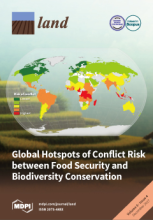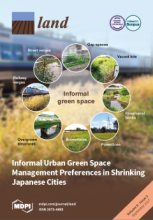Land Library
Welcome to the Land Portal Library. Explore our vast collection of open-access resources (over 74,000) including reports, journal articles, research papers, peer-reviewed publications, legal documents, videos and much more.
/ library resources
Showing items 352 through 360 of 440.Anthropogenic land cover change (ALCC) is the most important transformation of the Earth system that occurred in the preindustrial Holocene, with implications for carbon, water and sediment cycles, biodiversity and the provision of ecosystem services and regional and global climate.
The objective of this study was to examine whether the coupling of a land-use change (LUC) model with a carbon-stock accounting approach and participatory procedures can be beneficial in a data-limited environment to derive implications for environmental management.
Mapping ecosystem services (ES) increases the awareness of natural capital value, leading to building sustainability into decision-making processes.
Urban residents’ health depends on green infrastructure to cope with climate change.
This paper applies a resilience- and assemblage-based methodology to study the socio-ecological dynamics of human responses in the land degradation-affected Messara Valley (Crete, Greece) socio-ecological system, from 1950 to 2010.
China’s $1 trillion One Belt, One Road (OBOR) infrastructure project has significant landscape, socio-economic, and political implications in recipient countries. To date, investigation has focused on Chinese motivation and plans rather than OBOR impact in host nations.
Community-managed reserves (CMRs) comprise the fastest-growing category of protected areas throughout the tropics. CMRs represent a compromise between advocates of nature conservation and advocates of human development. We ask whether CMRs succeed in achieving the goals of either.
Urban expansion and its ecological footprint increases globally at an unprecedented scale and consequently, the importance of urban greenery assessment grows.
Riparian ecosystems are valuable to the ecological and human communities that depend on them.



